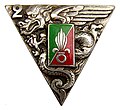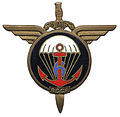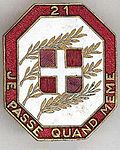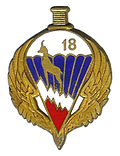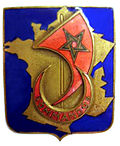



The history of French airborne units began in the Interwar period when the French Armed Forces formed specialized paratroopers units. First formed in the French Air Force, they were rapidly integrated into the French Army, French Navy, National Gendarmerie and from the British Armed Forces. Some were later included in the postwar French Armed Forces.
Contents
- French Army
- Parachute and airborne divisions
- Parachute Brigades and Groups
- Parachute Demi-Brigades
- Parachute centres of formation and schools
- Foreign Legion
- Troupes de marine
- Parachute Artillery
- Parachute Cavalry
- Parachute Engineer
- Parachute Infantry
- French Train Parachute Regiments
- Parachute Command and Support
- Matériel
- Vietnamese, Laotien and Cambodian Parachute Units
- Algerian Parachute Units
- French Air and Space Force
- French Navy
- National Gendarmerie
- Medics
- See also
- References
- Bibliography
- External links



